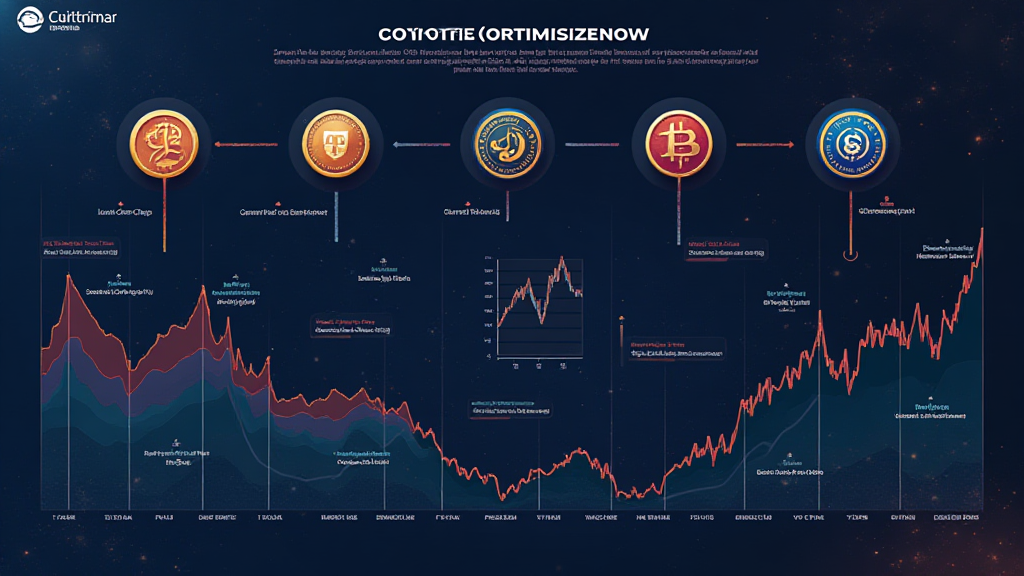Bitcoin Risk Management Frameworks: Safeguarding Your Digital Assets
Introduction
In recent years, the cryptocurrency market has witnessed explosive growth, with Bitcoin leading the charge as the most prominent digital asset. However, this growth comes with significant risks. The staggering statistic of $4.1 billion lost to DeFi hacks in 2024 underscores the urgency for Bitcoin users to adopt effective risk management frameworks. This article aims to provide valuable insights into Bitcoin risk management frameworks, ensuring your digital assets are safeguarded against potential threats.
Understanding Bitcoin Risk Management
Risk management in the context of Bitcoin refers to the process of identifying, assessing, and mitigating risks associated with the use of Bitcoin and other cryptocurrencies. This involves various strategies and tools aimed at preserving the integrity and value of digital assets.
Let’s break it down into four key components of a robust Bitcoin risk management framework:

- Risk Identification: Detect and outline potential risks that could threaten your Bitcoin holdings.
- Risk Assessment: Evaluate the likelihood and impact of identified risks on your asset portfolio.
- Risk Mitigation: Develop strategies to reduce the potential impact of risks.
- Monitoring and Review: Continuously monitor risk factors and review strategies to adapt to changing market conditions.
Common Risks Associated with Bitcoin
To effectively manage Bitcoin risks, it’s crucial to understand the common threats cryptocurrency investors face. Below are some prevalent risks:
- Market Volatility: The value of Bitcoin can fluctuate wildly in short periods, affecting investor confidence.
- Cybersecurity Threats: Hacking incidents and theft are prevalent in the crypto space, with hackers targeting exchanges and wallets.
- Regulatory Changes: Shifting regulations regarding cryptocurrency can introduce additional risks, impacting market dynamics.
- Operational Risks: This includes risks associated with trading platforms, including outages and technical failures that can lead to loss of access.
Implementing a Risk Management Framework
To effectively manage the aforementioned risks, investors must establish a framework that encompasses best practices and strategies. Below is a general outline of a comprehensive Bitcoin risk management framework:
- Choose Reliable Platforms: Conduct thorough research and choose reputable exchanges for trading your Bitcoin. According to blockchain data analytics firm Chainalysis, more than 70% of hacks are due to poor practices on user-exchanges.
- Utilize Hot and Cold Wallets: Secure your Bitcoin in both hot wallets (for easy access and trading) and cold wallets (for long-term storage). Cold wallets, such as hardware wallets, are considered safer.
- Employ Two-Factor Authentication (2FA): Activate 2FA on all accounts associated with your Bitcoin holdings to add an additional layer of security.
- Investment Diversification: Mitigate risks by diversifying your portfolio. Don’t put all your funds into a single asset.
Case Study: Implementing a Risk Management Framework
We’ll look at a hypothetical case of a Vietnamese investor who implemented these frameworks amid rising local interest in Bitcoin. In Vietnam, the user growth rate for cryptocurrencies reached 35% in 2025, attracting not just individuals but also businesses to the crypto ecosystem.
Our investor, named Minh, successfully navigated these challenges by:
- Researching five different exchanges and selecting those with strong security protocols.
- Using a combination of a Ledger Nano X for long-term storage and a hot wallet for daily trades.
- Setting up 2FA on all accounts and regularly updating passwords to enhance security.
This structured approach allowed Minh to minimize risks and maximize potential gains in a volatile market.
External Resources and Further Reading
For further insights into managing risks surrounding Bitcoin, we recommend checking credible sources, such as the guidelines from hibt.com and other platforms that specialize in cryptocurrency security and investment guides.
Conclusion
As the cryptocurrency landscape evolves, so do the risks associated with it. Understanding and implementing Bitcoin risk management frameworks is essential for both seasoned investors and newcomers. By staying informed, adopting best practices, and being proactive about risk assessment and mitigation, you can effectively protect your digital assets and navigate the volatile world of cryptocurrencies. Remember, it’s not just about investing; it’s about securing your financial future.
Always consult with a financial advisor before making investment decisions. This isn’t financial advice.
For more insights and guidance, visit us at techcryptodigest. Stay secure and informed!





